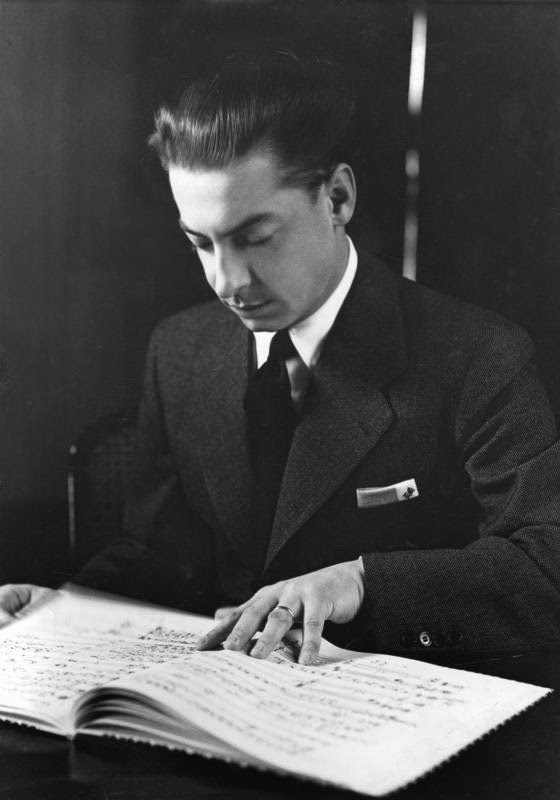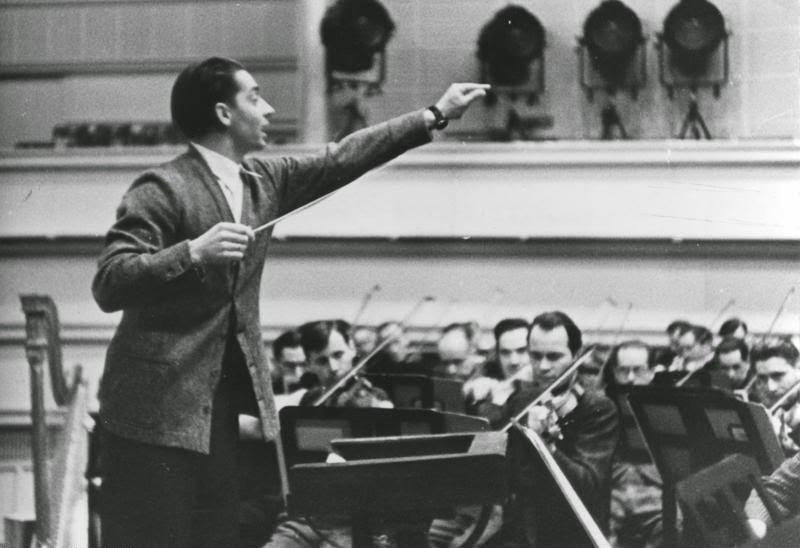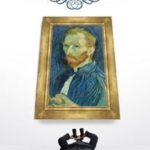For the last few days, Deutsche Grammophon has been plastering Facebook with Herbert von Karajan‘s April 5th birthday reminders in connection with the launch of their fantastic “digital concert hall.” Thinking back to hearing the news of his death in late summer 1989 seems like yesterday – certainly not 26 years ago! Anyway, all this inspired me to dig up this old piece I wrote on HvK years ago:
(Originally published in Trendline Magazine, January 2000; updated April 2015)
A conductor’s interpretation of a composer’s intent in his music shine through the orchestra’s performance and are as vital to the success of that performance or recording as the soloists and leads. Naturally many conductors become recognized for their interpretations. For example, before Peter Schaffer filmed “Amadeus” for the big screen, conductors and connoisseurs were quizzed about their opinions on who they thought was best suited for interpreting Mozart for the film’s soundtrack. Sir Neville Marriner and his orchestra, St. Martin-in-the-Fields were chosen by a wide margin.
My favorite composer is Ludwig van Beethoven and I am not alone among connoisseurs in believing there was one conductor that stood as an unquestionable authority, Herbert von Karajan. In his lifetime Karajan was to make more recordings than any other conductor and become the highest grossing musician for the Deutsche Grammophon record label. To this day the Wagnerian musical empire he built remains a marvel.
During the 19th century many conductors evolved into extraordinary and flamboyant figures who were capable of linking in the public consciousness a given orchestra with its hometown. Salzburg native Karajan understood the value of this, and used both his ruthless efficiency and 20th century technology to establish himself as just such a character.
 |
| Karajan in 1938 |
His style was unique, conducting without a score, with his eyes tightly shut, and leaving his expressive hands to be “the prolongation of his musical will.” The impression a Karajan performance left was almost like he didn’t care if the audience was even there.
His formidable power first became apparent when he accepted a position at Aachen in 1935. Before he was thirty he had conducted Wagner’s “Tristan and Isolde” with the Vienna Philharmonic, and was invited to conduct the prestigious Berlin Philharmonic. Early reviews were kind, one referring to him as “Das Wunder Karajan,” a phrase that would remain with him for the rest of his life.
His time coincided with the Third Reich, and Karajan used the NSDAP’s sophomoric and sterile artistic pretenses to his advantage after joining the party in 1933. Later in life he claimed it was like joining a ski club so you can ski their mountain, but party membership was hardly compulsory. While at Aachen in 1935 he celebrated Hitler’s rise to power by conducting 750 singers and 100 instrumentalists in a cantata entitled “Celebration of the New Front.” A performance of Beethoven’s “Fidelio” was added after the Austrian Anschluss in March 1938.
 |
|
| Karajan in 1941 |
In 1939, Wilhelm Furtwängler (1886-1954), himself one the greatest conductors of the 20thcentury, resigned in protest to a cancellation of a Hindemith opera because it did not fit the narrow confines of the Nazi party’s artistic tastes. Hitler then appointed Karajan conductor of Berlin’s State Opera. But as was common during the Third Reich, petty power struggles erupted and Karajan found himself the subject of one between his supporter, Luftwaffe chief Hermann Göring, and propaganda chief Josef Goebbels, who still favored Furtwängler.
After 1942 things changed between Karajan and Hitler himself. That the trouble arose from Karajan supposedly having a quarter Jewish relative seems far less probable than a disastrous performance of “Die Meistersinger von Nürnberg” in Berlin in 1940. When the principal singer appeared drunk on stage, an enraged Hitler – one must remember “Die Meistersinger” was Hitler’s favorite, der Führer stormed out and it is said never forgave Karajan for ‘ruining’ it. As if Karajan himself had held down the performer and funneled in half a bottle of Jägermeister. Additional trouble had arisen when Karajan married textile heiress Anita Gutermann, whose grandfather was Jewish.
From here Karajan’s relationship with the Nazi party becomes obscure with many strange rumors, including one that he was attached to the SD, or Sicherheitsdienst – the intelligence agency of the SS and NSDAP. Perhaps it was part of Karajan’s obsession with absolute power and control that made him sympathetic or willing to work with the Nazis, but in reality we’ll probably never know.
Despite the shadow his party affiliation cast over his reputation in England and America, Karajan would never condemn the Nazi party, even late in life. Biographer Roger Vaughan tells of a day when Karajan took him for a ride to Obersalzberg, which was in fact just seven miles from Karajan’s home:
“He stopped his Mercedes up the hill above the spot. ‘The house isn’t there anymore. They bombed it. There’s not even a monument.’”
“There is no question,” recounted Vaughan in a 1989 Vanity Fair article “that Karajan had great admiration for Hitler.” Karajan’s resistance to Allied denazification techniques at last led the Soviets to forbid his appearance on the conductor’s box – at least for a time. Of course eventually the ban was lifted, but Karajan would have to wait until Furtwängler’s death in 1954 to being final consolidation of his power and begin construction of his own empire.
It took nearly twelve years to finalize the lifetime contract with the Berlin Philharmonic for himself , and during this time he conducted the London Philharmonic, became artistic director of the Salzburg Festival, and later of the Vienna State Opera. Eventually he gave up almost every position and became known mostly for his monumental work with the Berlin Philharmonic. His productions with the Salzburg Festival were among the most lavish and costly every undertaken there. Later in life Karajan dissolved his lifetime contract with the Berlin Philharmonic after local elections placed less than sympathetic officials in office. He then retired to his home studio where he worked at preserving his life’s work for the burgeoning digital media. Edward Rothstein called it “embalming on high-tech magnetic tape.” However you choose to call it, it was still the micro-manager Karajan at work on a job he trusted to absolutely no one else.
Karajan died just before lunch on July 16, 1989 at his home in Anif, Austria, and was buried almost before the rest of the world had even learned of his passing. Two weeks later a memorial service was held at the Salzburg Festival House. Guests included musical luminaries of the time such as Sir Georg Solti, James Levine, Seiji Ozawa, and political figures like Kurt Waldheim and Berlin mayor Walter Momper.
Both Levine and Ozawa were guest conductors of the Vienna Philharmonic for the service. There was no applause. It was simply appearances and performances of persons and music. The Rhine had flooded, reclaimed the Rheingold, and Valhalla blazed in the distance…





